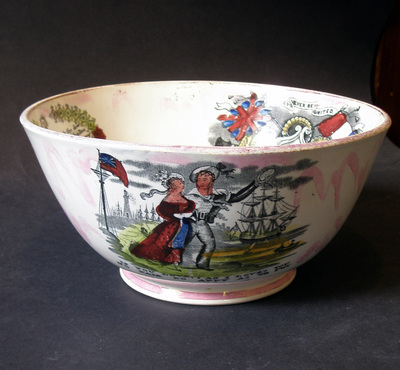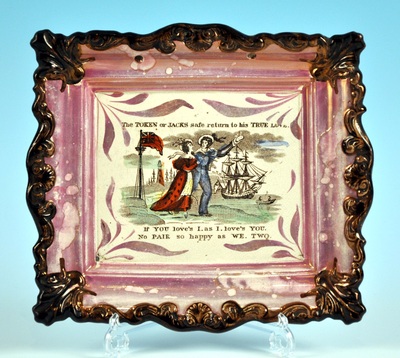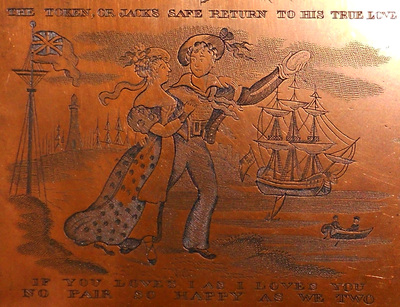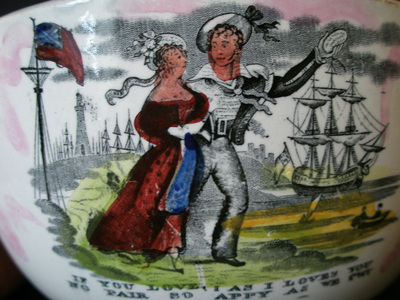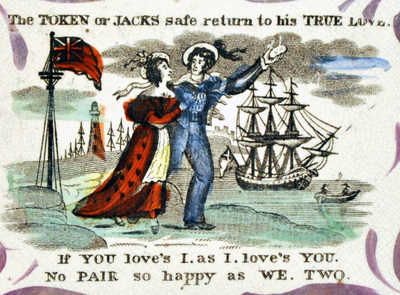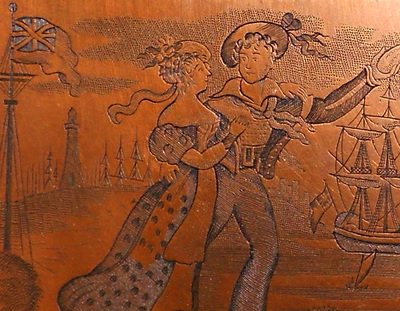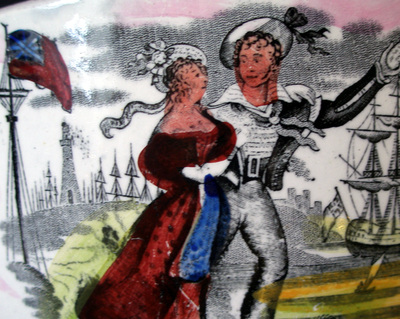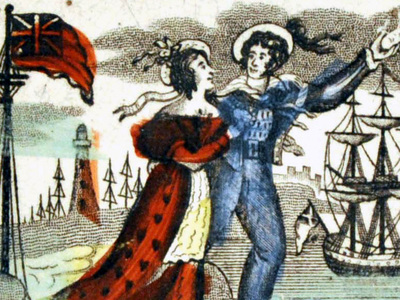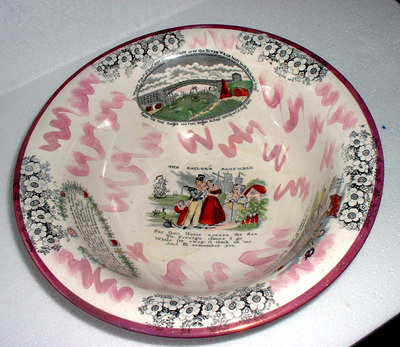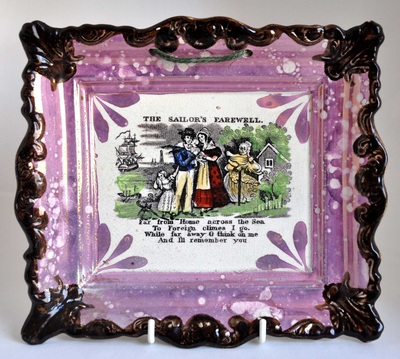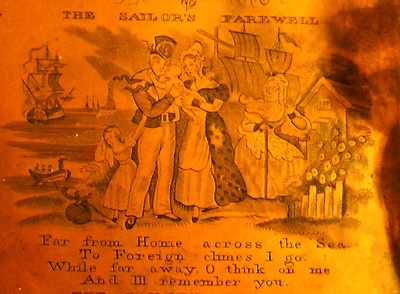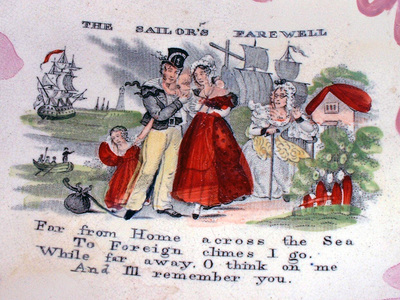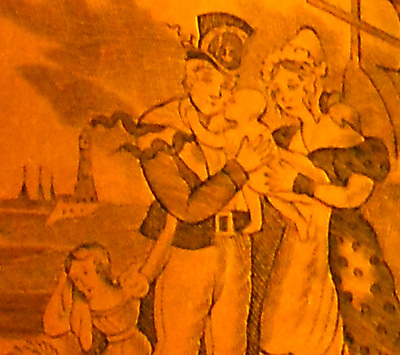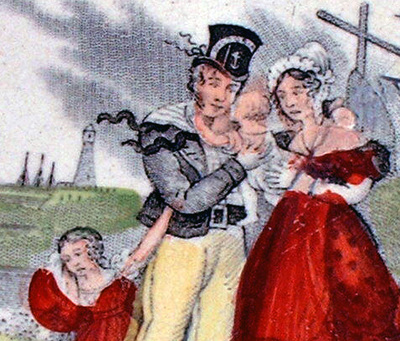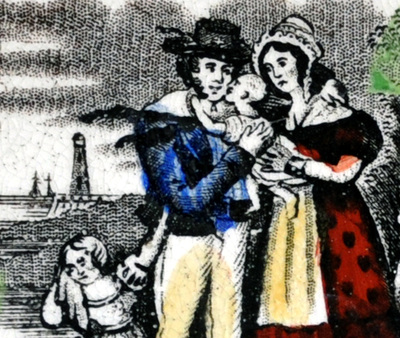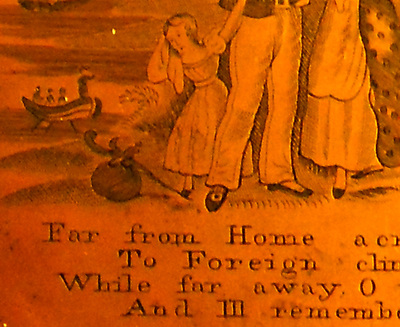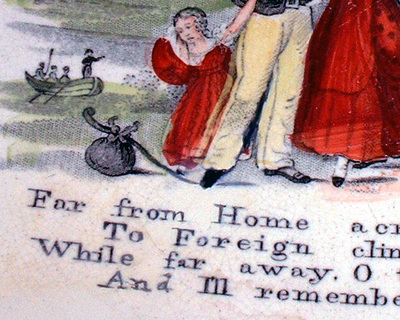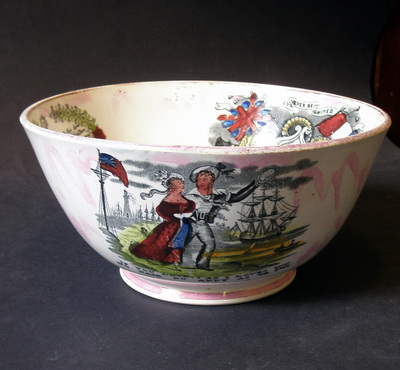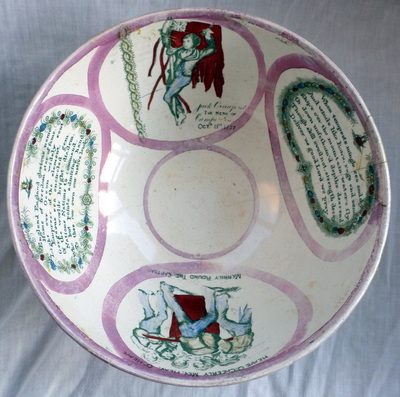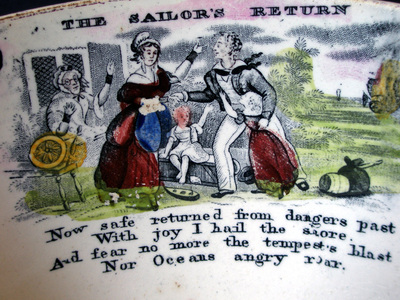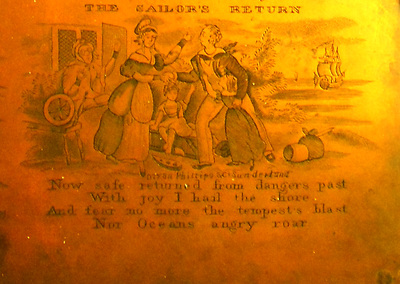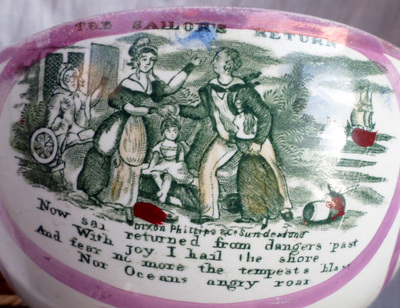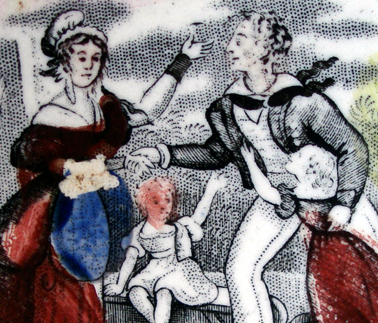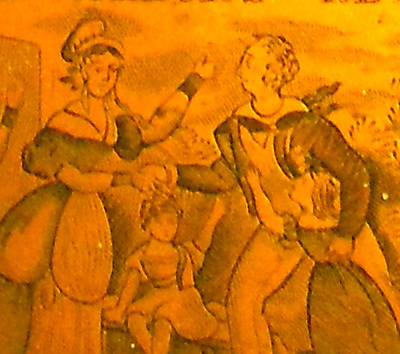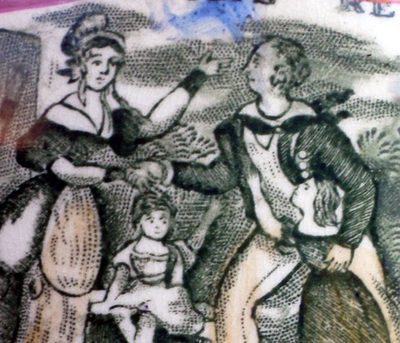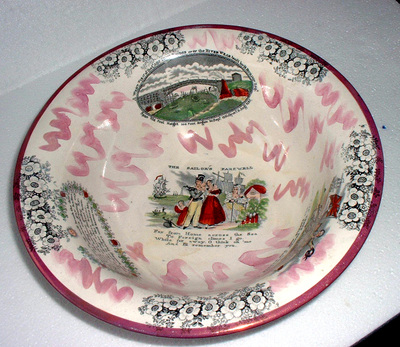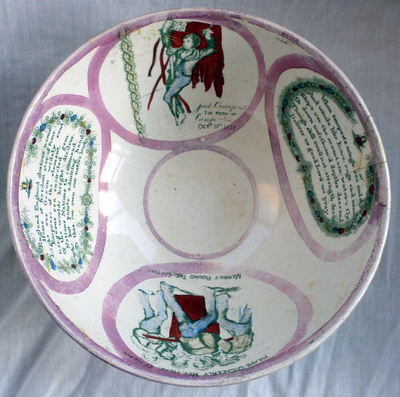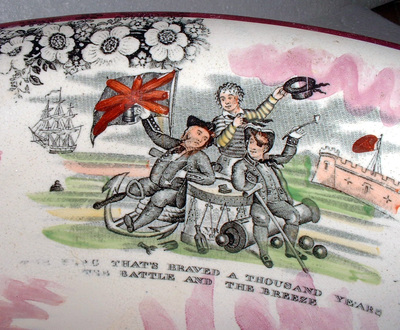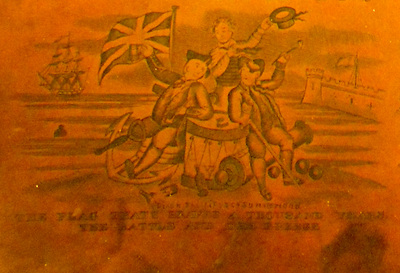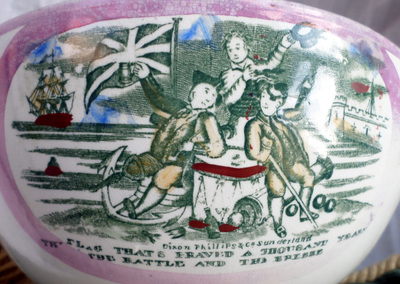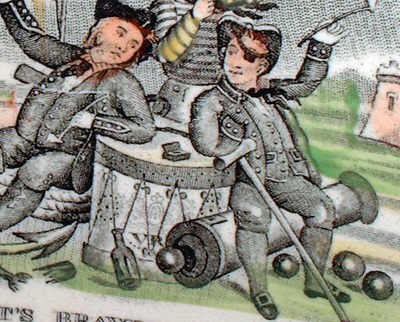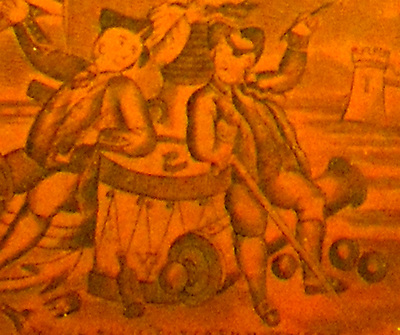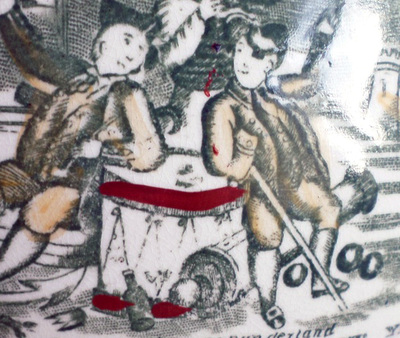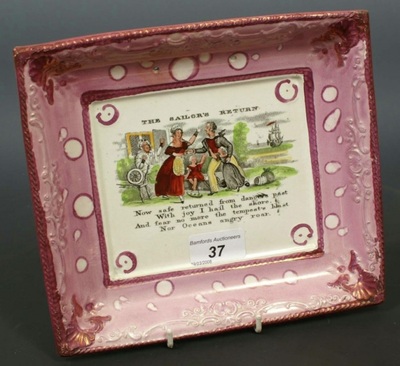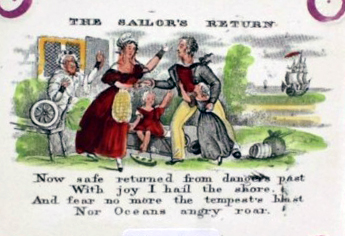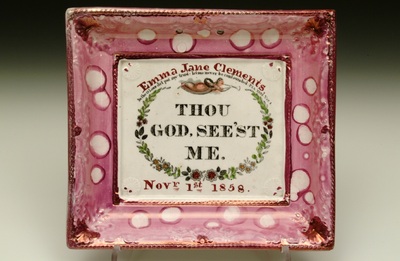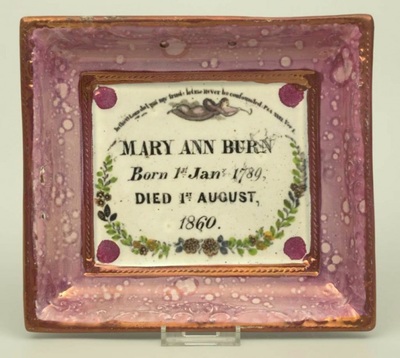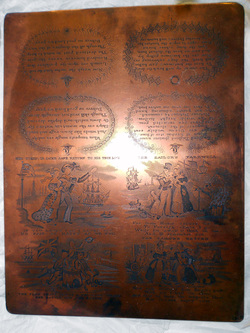 Huge thanks to Shauna Gregg at the Sunderland Museum for sending images of this copper transfer plate in the museum collection. Here's what Baker says about it... 'A copper plate was presented to Sunderland Museum by a member of the Ball family in 1963. [The transfers] are engraved on a copper plate manufactured by Pontifex and Stiles, 23 Lisle Street, London. In 1834, William Stiles joined Russell Pontifex, up to then trading as R. Pontifex and Son. The name was changed to Pontifex and Stiles until the partnership ended in 1839. As one of the designs on the plate has the name 'Dixon, Phillips & Co, one must assume that the firm changed its name some time between 1834–39. This copper plate appears to have passed through the hands of either Moore's or Scott's (possibly both) and finally to Ball Brothers.' From press announcements we now know that the Dixon, Phillips & Co partnership began in 1839. So if the copper plate was engraved by Pontifex and Stiles for that partnership, it could only have been made in that year. And if it did start life at the Garrison Pottery (Dixon's), it likely would have found its way to Moore's and/or Scott's after 1865, when the Garrison Pottery closed. But there are a couple of 'ifs' in this paragraph. The TokenSo was the above transfer plate used by Scott's or Moore's, or both? Below left is a bowl attributed to Scott with similar transfers, and below right, a brown-bordered plaque attributed to Moore. If you look at the details of the transfers, it's clear that the plaque (right details) has a transfer from a different copper plate. The bowl, however, has a very similar transfer to the copper plate above (see left and centre details). The Sailor's FarewellThe differences between the Sailor's Farewell transfers are even more pronounced (Scott-impressed bowl below left, Moore-attributed plaque below right). The sailor is wearing a completely different hat (bowl centre, plaque right). There's a crucifix-shaped mast behind the woman's head in the Scott version, which again is very similar to the copper plate (left). However, for all the close similarities, I think the Scott version also comes from a different transfer plate. Compare the two details below. The shadows under the man's feet, the raised oar in the rowing boat in the Scott version. And yet, the spacing of the lettering is identical. At first I thought this might be down to the image having been re-engraved. But more likely, the image of one of the copper plates was transfer printed onto copper, which was then engraved to form a copy/second plate. The Sailor's ReturnSo if the copper plate corresponds neither with transfers used by Scott's nor Moore's, where was it used? Ian Holmes has a bowl on his United Collections website that certainly comes from this transfer plate. Below is a comparison of the Sailor's Return transfer on the Scott attributed bowl (left) and Ian's bowl (right) attributed to Ball's Deptford pottery. If you move between the images, you'll see the Ball's bowl is the perfect match. One blindingly obvious difference between the transfers is the printed mark 'Dixon Phillips & Co Sunderland' which appears on the Ball's bowl and on the copper plate. If the Scott version (top detail below) were copied from an 1839 Dixon's copper plate, Scott's might well have chosen to omit the printed mark. But, as Ian Holmes points out, the mark appears to have been added as an afterthought, squeezed into a narrow gap, with bits of shading running through it, and in decidedly spidery script. The Flag that's Braved a Thousand YearsThe last of the pictorial transfers on the copper plate also has the 'Dixon Phillips & Co Sunderland' mark. In this case we're comparing the transfer on a Scott-impressed bowl (left), with the Ball's-attributed bowl (right). There are many subtle differences with the Scott transfer (below left), but in particular note the top of the crutch of the sailor on the right. This is more than just later re-engraving. The Scott transfer almost certainly comes from a different copper plate. And again notice how the Dixon mark has been squeezed into a gap (Scott version top). It again runs over the shaded areas, suggesting that it was added at a later date. The transfer plate above may have originated at Dixon's - we'd need to know more about why Baker was so sure it was engraved by Pontifex and Stiles. Is there a mark on the copper plate somewhere? - I couldn't find one. Even if that were proven, it wouldn't necessarily follow that the 'Dixon Phillips & Co Sunderland' mark was genuine. Ball's has an already murky reputation as a pottery that printed items with other potteries' marks. But forging a mark would take them into a whole new league. Could the Ball's family inadvertently have donated evidence of forgery to the Sunderland Museum? We may never know, but we owe them a huge debt of gratitude for saving the copper plate. One thing that might settle it would be to find an 1840s or 1850s Dixon item with the Ball's transfers. However, in many hours of searching over recent weeks, I haven't found anything from Dixon's with these transfers. Some last thoughtsMoore's, Scott's and Ball's appear to have used different versions of the transfers that appear on the copper plate in this post (I could have done a similar exercise with the verses, but you would have lost the will to live). It would have been tidier if the Scott transfers matched those on the copper plate, and if the Dixon attribution of the plate had been stronger. That way, we could have fairly confidently dated the Scott items to post-1865 when the Garrison Pottery closed.
But with regards to my thoughts of recent weeks, nothing much has changed. We already knew that the Scott versions of these transfers were likely used in the 1860s, because of similar plaques with dates in the Sunderland Museum (see below). And yes, that's the period when the brown-bordered plaques were produced. The 'Scott' versions of these transfers never appear on Moore's items. However, the 'Moore' versions of the transfers do appear on Scott's items, likely because Scott's sent them to Moore's for decoration.
1 Comment
michael scheffler
2/26/2019 06:43:30 am
I have a 12-7/8ths x 11" copper printing plate map stamped on back,
Reply
Leave a Reply. |
AuthorStephen Smith lives in London, and is always happy to hear from other collectors. If you have an interesting collection of plaques, and are based in the UK, he will photograph them for you. Free advice given regarding selling and dispersal of a collection, or to those wishing to start one. Just get in touch... Archives
February 2022
AcknowledgementsThis website is indebted to collectors, dealers and enthusiasts who have shared their knowledge or photos. In particular: Ian Holmes, Stephen Duckworth, Dick Henrywood, Norman Lowe, Keith Lovell, Donald H Ryan, Harold Crowder, Jack and Joyce Cockerill, Myrna Schkolne, Elinor Penna, Ian Sharp, Shauna Gregg at the Sunderland Museum, Keith Bell, Martyn Edgell, and Liz Denton.
|
